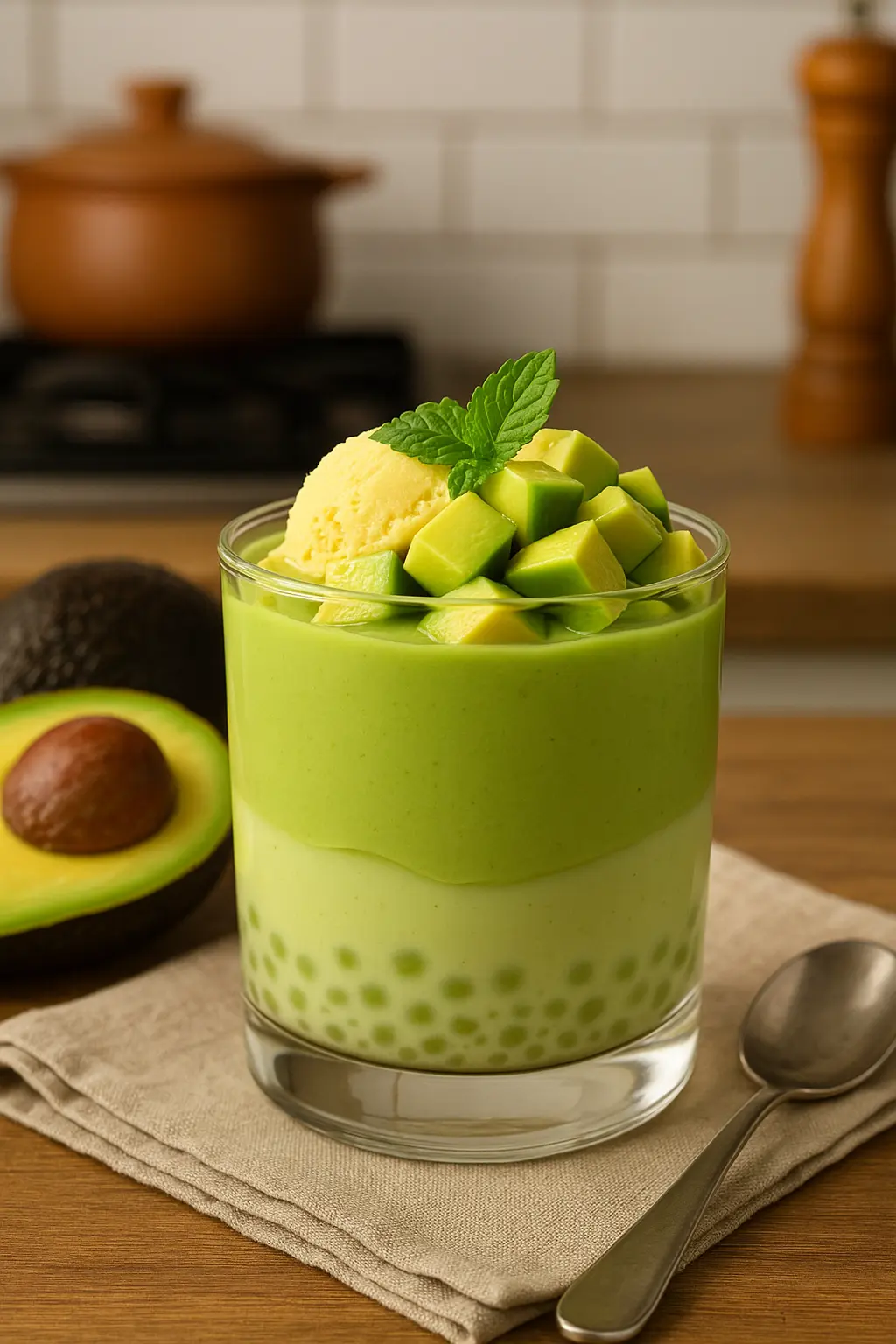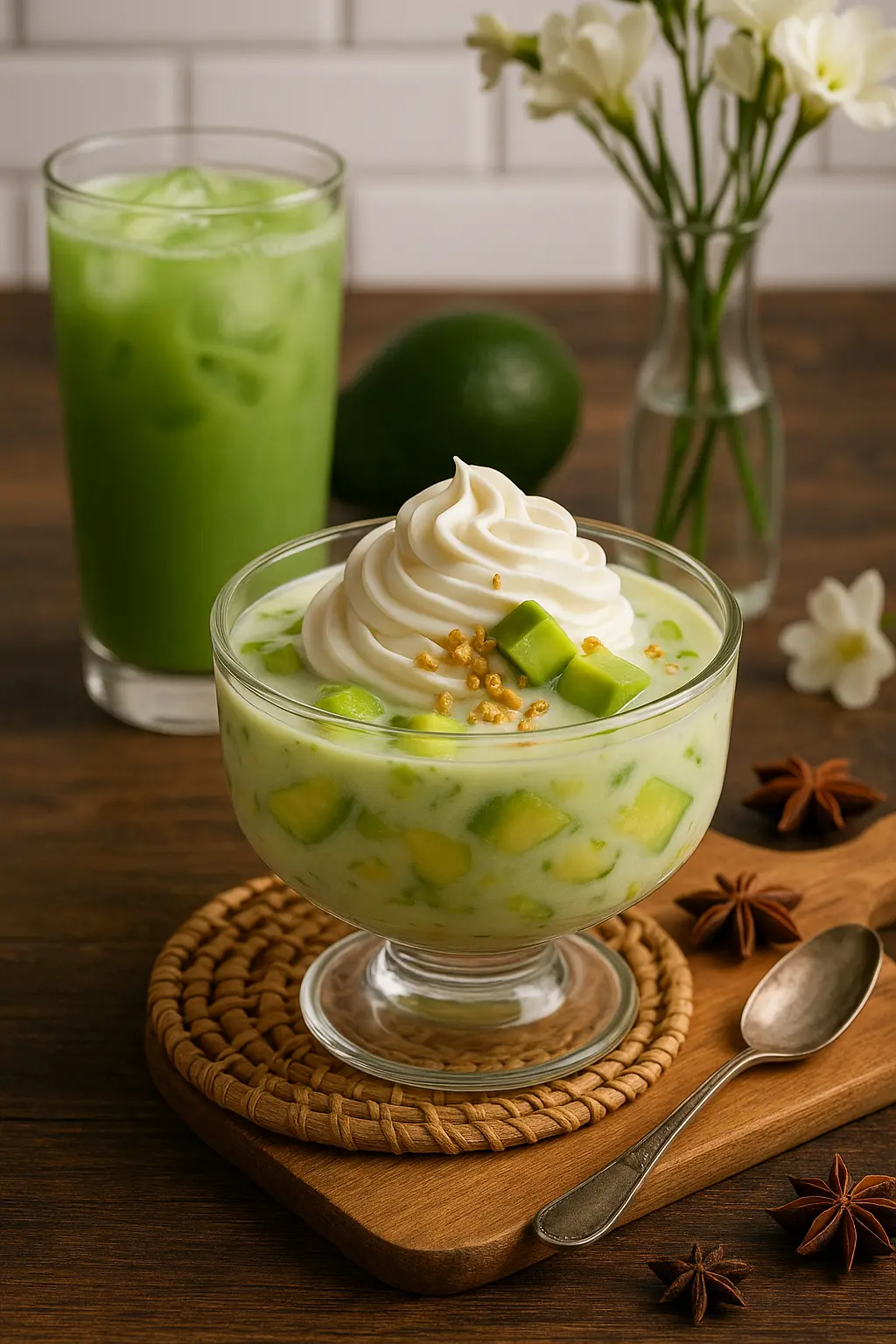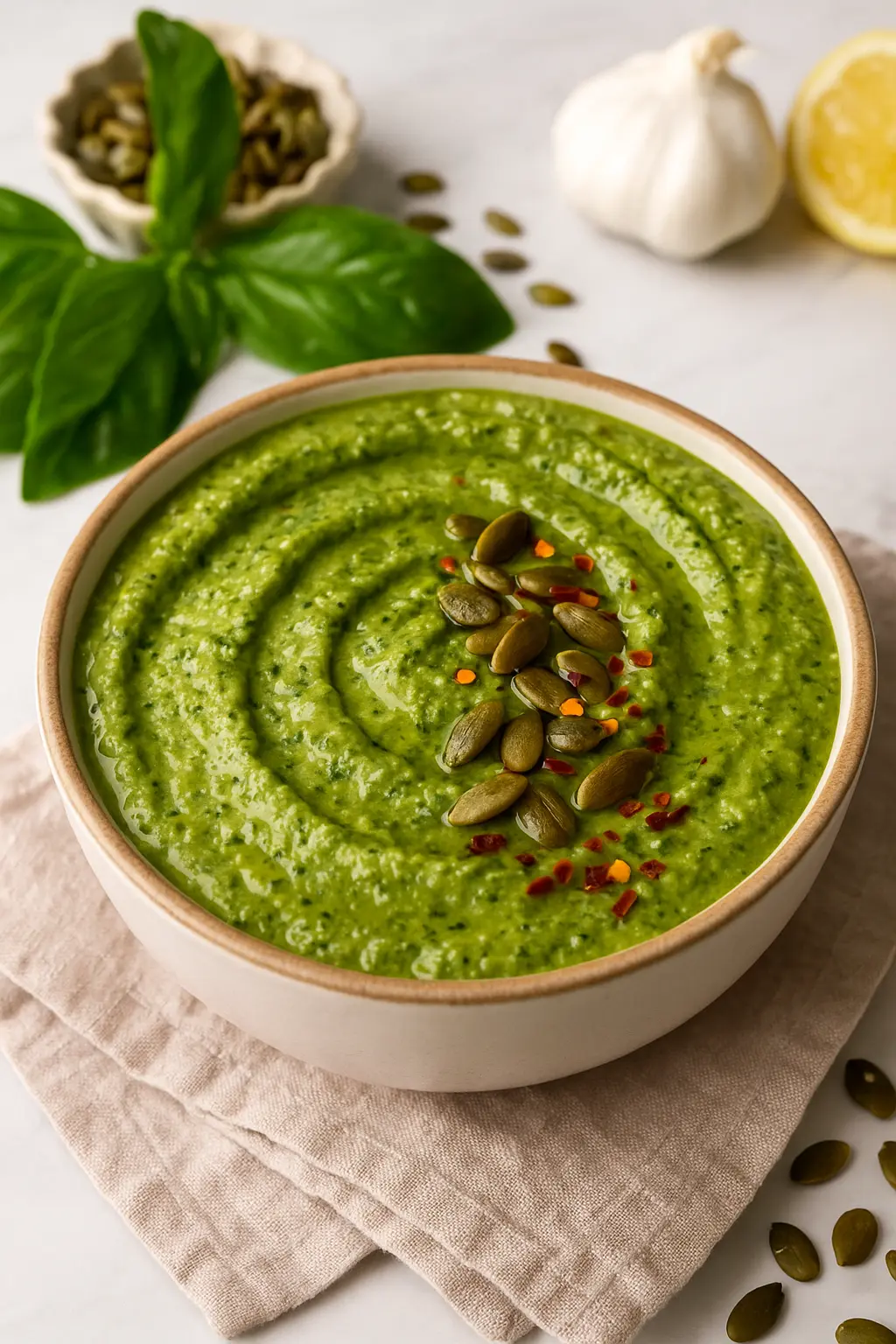Avocado Dessert Filipino: A Sweet Treat for Every Season
There’s something uniquely comforting about the taste of avocado dessert Filipino style. If you’ve never tried avocado as a dessert, this is your sign to explore one of the Philippines’ most beloved tropical treats. This creamy, no-bake dessert is a nostalgic dish for many Filipinos and a delightful discovery for those new to the cuisine. It’s simple, refreshing, and adaptable — making it perfect for both hot summer afternoons and cozy winter nights.
In my family, avocado dessert Filipino was more than just a way to cool off in the tropics — it was a celebration of the season’s harvest. I remember my grandmother slicing perfectly ripe avocados, mixing them with sweetened milk and ice, and serving them in chilled bowls with big smiles all around the table.
Whether you’re from the Philippines or just love international desserts, this dish brings creamy indulgence with minimal effort. And yes, the star is avocado — not in a salad, not on toast, but as a luxurious dessert.
Why Avocado Dessert Filipino Is a Must-Try
The avocado dessert Filipino recipe blends tropical fruit with milky sweetness, resulting in a unique yet comforting dish. Here’s why you’ll love it:
- It’s no-cook and no-fuss.
- Naturally gluten-free and rich in healthy fats.
- Easily adjustable for summer coolness or winter richness.
- A great intro to Filipino desserts and their tropical flavor profiles.
Ingredients (Serves 6)
To recreate the traditional avocado dessert Filipino at home, you’ll need:
- 3 large ripe avocados
- 1 can (14 oz) sweetened condensed milk
- 1/2 cup whole milk (or coconut milk for a tropical twist)
- 1/2 tsp vanilla extract
- 1/2 cup crushed ice or ice cubes
- Pinch of sea salt
- Optional: toasted coconut, diced jackfruit, nata de coco, sago pearls

Prep & Chill Time
- Preparation: 10 minutes
- Chilling Time: 30 minutes (optional)
- Total Time: 40 minutes
This avocado dessert Filipino recipe doesn’t require cooking — just a bit of slicing, mixing, and chilling.
How to Make Avocado Dessert Filipino Style
Step 1: Slice the Avocados
Cut the avocados in half, remove the pits, and gently scoop out the flesh. Dice into medium chunks. For an extra-creamy texture, mash a few pieces lightly.
Step 2: Blend the Sweet Milk Base
In a bowl, mix the sweetened condensed milk, whole milk (or coconut milk), and vanilla extract until smooth.
Step 3: Combine and Chill
Fold in the avocado chunks and add a pinch of sea salt. For a summer vibe, add crushed ice. For winter, chill the mixture in the fridge for 30 minutes for a creamy, thick consistency.
Step 4: Serve with Flair
Spoon into serving bowls or glasses. Garnish with optional toppings to elevate your avocado dessert Filipino presentation.

Customizing Your Avocado Dessert Filipino
| Variation | Ingredients | Season |
|---|---|---|
| Tropical Twist | Coconut milk, mango cubes, jackfruit | Summer |
| Creamy Fusion | Almond milk, cinnamon, nutmeg | Winter |
| Halo-Halo Inspired | Sago pearls, nata de coco, sweetened banana | All year round |
Serving Suggestions
Serve your avocado dessert Filipino chilled in glass jars for a rustic presentation. It also pairs well with:
- Pandan jelly cubes
- Toasted graham crumbs
- A drizzle of chocolate syrup
- A scoop of coconut ice cream on top
Pair with chilled pandan tea or sago drink for a complete Filipino-inspired dessert hour.
The Sweet History of Avocado Dessert in Filipino Cuisine
In the Philippines, avocados are typically eaten sweet — unlike in the West, where they’re more commonly used in savory dishes. The traditional avocado dessert Filipino is often made with just avocado, milk, and sugar — a treat passed down through generations and beloved by kids and adults alike.
The American influence introduced sweetened condensed milk into this dish, transforming it into a richer, more indulgent treat. Today, the avocado dessert Filipino remains a cherished blend of tradition and adaptation.
Health Benefits of Avocado Dessert Filipino
Yes, a dessert can be both indulgent and healthy! The avocado dessert Filipino is:
- Packed with monounsaturated fats – good for heart health
- Rich in potassium and fiber
- Easily made dairy-free and vegan
- Naturally gluten-free
For a lighter version, swap condensed milk for a plant-based sweetened alternative and use coconut or oat milk.
Tips for the Perfect Avocado Dessert Filipino
- Choose perfectly ripe avocados – soft, not mushy.
- Don’t skip the sea salt – it brings out the sweetness.
- Add mix-ins right before serving – to keep textures fresh.
- Use chilled bowls – especially for summer servings.
Winter Edition of Avocado Dessert Filipino
Surprisingly, this cold dessert holds its own in winter. For a cozy version:
- Use warmed milk with cinnamon and vanilla.
- Let the avocados soften in the warm mixture.
- Serve slightly warm with toasted coconut on top.
This transforms the avocado dessert Filipino into a creamy comfort food that’s perfect beside the fireplace.
Read more : https://chefnip.com/filipino-kakanin/
Fun Facts About Avocados in the Philippines
- Locally known as “abukado,” avocados grow abundantly in the Philippines from May to September.
- Filipinos rarely use them in guacamole or salads — sweet preparation is king!
- Many families have their own spin on the avocado dessert Filipino, often passed down from grandmothers.
Avocado Dessert Filipino Around the World
The global food scene has embraced avocado as a superfood, but avocado dessert Filipino style still flies under the radar. It’s becoming a secret weapon in international kitchens for its versatility and flavor.
In the U.S., Filipino-American communities have popularized this dessert at food fairs and cultural festivals. It’s common to find it served in fusion-style cafés alongside bubble teas or modern halo-halo variations.

Kid-Friendly and Party-Ready
This avocado dessert Filipino recipe is perfect for:
- Afternoon snacks: Easy for children to eat and filled with nutrients.
- Potlucks or picnics: Just prepare it in advance, store in mason jars, and serve chilled.
- Holiday buffets: Pair with ube halaya and leche flan for a full Filipino dessert spread.
To make it more kid-friendly, you can add a small scoop of vanilla or mango ice cream and serve in colorful cups.
Avocado Dessert Filipino Meal Pairings
Want to make a full Filipino-inspired meal? Serve this dessert after:
- Chicken adobo – The richness of adobo balances perfectly with the lightness of the avocado dessert.
- Grilled tilapia with garlic rice
- Pancit bihon or palabok – The sweet creaminess of the dessert rounds out savory noodle dishes.
Add a refreshing drink like calamansi juice or buko pandan cooler to round out the experience.
How to Store Avocado Dessert Filipino
If you’re making this in advance:
- Store the avocado and milk mixture in an airtight container.
- Avoid adding ice or watery ingredients until just before serving.
- Best consumed within 1–2 days for optimal freshness.
Pro Tip: A small squeeze of lemon juice can help prevent the avocados from browning if storing overnight.
Fun Serving Ideas
Make your avocado dessert Filipino stand out visually! Try these:
- Avocado Parfait: Layer with graham crumbs and whipped cream in a tall glass.
- Avocado Sundae: Add scoops of coconut or vanilla ice cream, chocolate syrup, and roasted nuts.
- Avocado Shake: Blend with ice, a splash of milk, and drizzle of condensed milk for a drinkable dessert.
Use clear serving glasses or dessert bowls to showcase the beautiful green hue and creamy texture.
FAQ: Everything You Want to Know
1. What is a Filipino avocado dessert called?
It’s commonly called Avocado lamaw, also known as abukado lamaw or “avocado and milk in ice.” It consists of ripe avocado mixed with milk (condensed, evaporated, powdered, or fresh), sugar, and ice–eaten spoon‑style or as a milkshake
2. What ingredients are in a traditional Filipino avocado dessert?
Typically:
- Ripe avocado
- Sweetened condensed milk (or evaporated/powdered milk with sugar)
- Crushed ice or ice cubes
- Optional: sugar, fresh milk, bananas, sago/tapioca, coconut jelly (gulaman)
3. Should you add ice to avocado dessert?
Yes! Most versions use ice – either crushed or cubed – to chill it. That said, some prefer no ice (using powdered milk and sugar only). Ice may water down the dessert as it melts
4. Is it a shake or a spoon‑eaten dessert?
It can be enjoyed both ways. When blended, it becomes a creamy avocado milkshake/shake; when served with diced avocado and milk over ice, it’s more like a spoonable dessert
5. Can it be made vegan or healthier?
Absolutely! You can replace dairy with plant-based milks (oat, soy, coconut) and use vegan condensed milk. Adding avocado also increases healthy fats and fiber, making it a more nourishing treat
6. What are popular variations of the avocado dessert?
Some delicious twists include:
- Avocado con yelo: diced avocado with shaved ice, milk, sugar
- Avocado sago: avocado + tapioca pearls + coconut milk + condensed milk + ice
- Avocado sago jelly: includes gulaman (agar), creamy base, sago, cubed avocado
Sustainability Note
Choosing locally grown avocados — especially in the U.S. or Southeast Asia — supports sustainable agriculture. Filipino avocados are smaller and creamier than Hass varieties but just as flavorful in desserts.
Using shelf-stable condensed milk and coconut milk also reduces waste and improves shelf-life in your pantry.
Avocado Dessert Filipino vs. Other Global Avocado Sweets
Here’s how this dessert compares to other international avocado treats:
| Country | Avocado Dish | Description |
|---|---|---|
| Philippines | Avocado Dessert Filipino | Sliced avocados with milk, sweetener, and ice |
| Brazil | Vitamina de Abacate | Avocado smoothie with milk and sugar |
| Indonesia | Jus Alpukat | Avocado shake with chocolate syrup |
| Mexico | Avocado Ice Cream | Made with lime, cream, and sugar |
This proves how adaptable avocados are — but the avocado dessert Filipino version remains a favorite for its simplicity and nostalgia.
Seasonal Ingredient Swaps
Want to customize your dessert with seasonal produce?
- Summer: Add mango cubes, lychee, or pineapple
- Winter: Top with caramelized bananas, cinnamon, or crushed roasted nuts
- Spring: Mix in fresh strawberries or citrus zest
- Fall: A drizzle of maple syrup and crushed graham crackers give a cozy twist
These additions let you keep the base avocado dessert Filipino and tweak it to suit any occasion.






Comments and Reviews